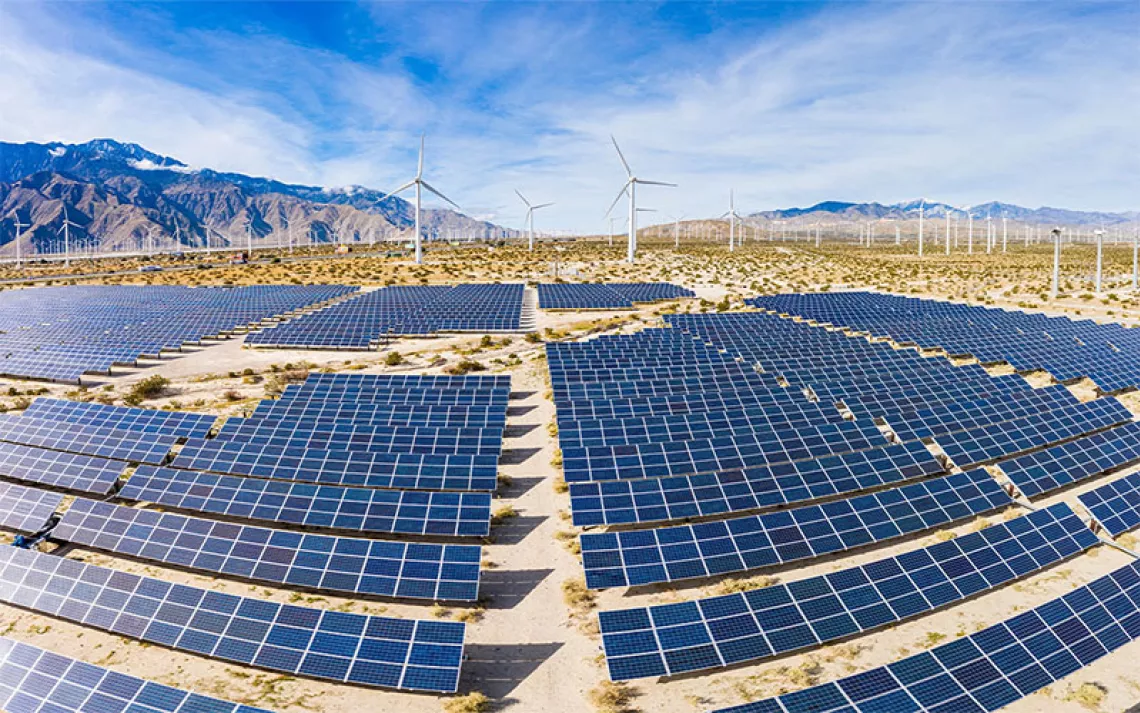The Person Who Controls the Camera Creates History
A kite that can harvest wind power, made possible by Ninja X video skills

Andrea Dunlap, multimedia archivist at Makani Technologies | Photo by Jen Siska
I've been excited about photography ever since I was little and realized that the person who controlled the camera in my family was the creator of our history. I wanted to know everything about photography, so I put it all on the line and went to art school. My dream was to work for National Geographic. I didn't get to do that, but I did intern for National Geographic Adventure, returning slides to photographers. I got really fast at sending FedEx packages—I was able to send 40 in a day. That was unrewarding.
Meanwhile, a friend of a friend was starting a company called Makani. He was like, "We're going to change the way renewable energy is made in the world by making a kite that can harvest wind power, and we should have someone recording it from the very beginning." My very first piece of footage has him introducing me as the person who will "make a cutting-edge, semi-satirical, lighthearted docu-comedy about the team who takes on a really hard project and makes it all work due to their Ninja X skills."
At first, I was really intimidated. I thought, "They're the smart people. I'm just here to make a recording." But then I realized Makani needed me to understand the technology too, so I could help explain it to the rest of the world. Just showing that this new technology exists and that it works has been key to our success. So I started asking a lot more questions. While people were working, I would film them and ask them what they were doing. I realized that I was capable of understanding the kite. I noticed how much my coverage of the team helped them shape their image of themselves, and that there was power and influence there that I had to wield with care.

Sign up to receive Sierra News & Views
Get articles like this one sent directly to your inbox weekly.
With this action you affirm you want to receive Sierra Club communications and may vote on policy designated by the Sierra Club Board.
In 2009, the recession happened, and my job was in jeopardy. But the company kept me on, because it had become clear how valuable it was for the team of engineers to have documentation of the test flights. The things that I caught on video influenced the design of different components and changed the way people thought about problems.
Sometimes, for example, we can look back and learn lessons from older footage. Recently, we saw something that reminded us of a test that we had done with a smaller prototype in 2013. I had a huge trove of footage: the test, an engineer explaining what the test was before we did it, another engineer analyzing what happened afterward. It was like a hand stretched through time to the new team.
When we first started filming test flights, we used these little things called pen cams that we'd just tape to the kites. Then we went to Canon PowerShots. When the GoPro came out, we were like, "Oh my gosh, this is the most amazing camera ever." Every few years we do an audit to see if we are still using the best camera for the job. The new kites will have cameras built in.
In the future, as flight duration increases, we'll be automating some of the video. I can't wait for that. Some flights can be as long as 10 hours. Sometimes I would get a chair and sit down, but I couldn't leave, because right when I did, the interesting thing would happen.
Since this new model, the M600, we've been using the test-flight footage less and less. I look at the view count on the videos that I upload for the engineers, and sometimes it's zero because the flight went well. It's just so boring that they don't even want to look at it. Which is great.
Last summer was a big milestone, because we tested our kite while it was tethered to a floating spar buoy in deep water in Norway. Before we went offshore, we had to take an oil-worker survival skills training course, which had us using every kind of fire extinguisher on real flames and culminated with us being trained on how to escape from an upside-down, underwater helicopter chassis.
Filming the test was tricky. The kite has about the same wingspan as a regional airplane. It flies in large circles and generates electricity from the wind—like a wind turbine. So I had to stand in a boat in rough water and shoot a kite that's flying a thousand feet in the air. I can't wait to go back and put into practice all the things I learned from the first shoot.
This article appeared in the March/April 2020 edition with the headline "Eye on the Kite."
This article was funded by the Sierra Club's Beyond Coal campaign.
Editor's Note: After this story went to print, Google's parent company, Alphabet, ended its seven-year-long financial support for Makani.
 The Magazine of The Sierra Club
The Magazine of The Sierra Club



